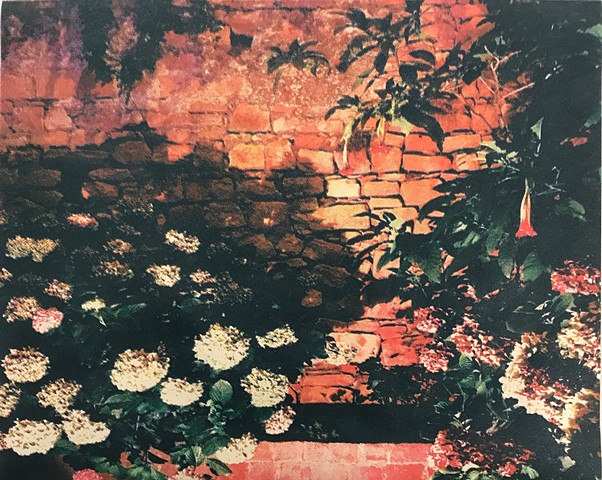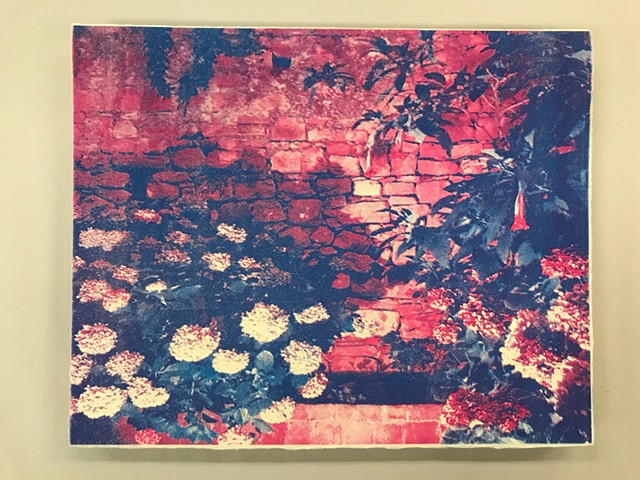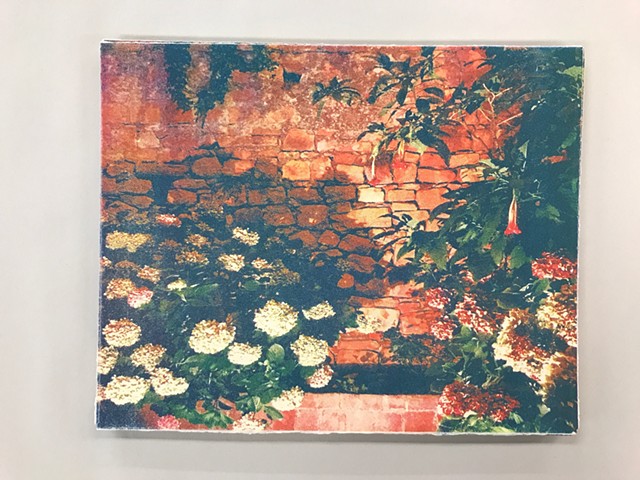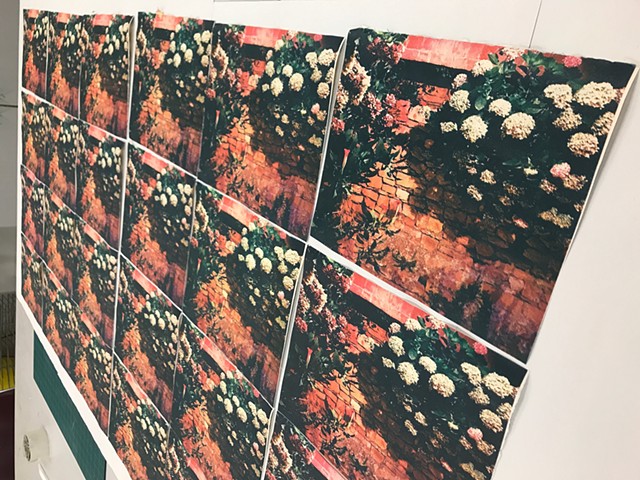Ortensia Elettrica
From an ongoing series of photographic four-color screenprints on Kitakata Japanese paper.
The sense of longing in depopulated spaces create voids or theaters of cultural and national identity. Here we encounter fear of loss, rupture, abandonment or invasion in the theater of the nostalgic landscape, and witness detruction, regeneration, enchantment and disenchantment. As a dual citizen, I look to the theater of Italy and global parallels to understand my relationship with contemporary society, its historically romanticized landscape and its power to seduce. In rendering these landscapes I also am acutely aware of its ongoing battle with misogyny, fascism, the persistence of a feudal mentality, and the lingering pall it casts over its people, which inevitably has shaped my life and experiences there. My narrative impulse and tendency toward ambivalent, theatrical scenes in my work and the way I utilize nature and architecture as framing devices results in work that references the pre-cinema, puppet shows, perception and illusion, the hidden and 'almost-seen', and vernacular storytelling through layered pieces that explore the poetics and the perils of place.
In this ongoing series Ortensia Elettrica (which ultimately will be comprised of close to 20 images), I liken unpopulated scenes that I come upon in my wanderings to backdrops and stage sets. I am attracted to instances of theatrical lighting, saturated color, and see the superimposition of time and nostalgia in these spaces.
Using fine half-tone screenprints, I focus on proscenium-like scenes and framing devices created by plants and architecture, shadow and light. These images include not only real and miniature theater prosceniums, but sites of drama in the past, from WWII bunkers on the islands in the Venetian lagoon, a walled courtyard in a convent, a wall against which a crime or a love story took place, and scenes that invite both furtive and explicit looking - mirrors, gates, and peripheral, abandoned and unknown corners laden with a past but with new stories superimposed.
These are sites of hidden, illicit, and forgotten stories, whose mystery lies in the obfuscation of location, time, and even time of day. Plants illuminated by artificial lights confuse day and night, scale models confuse our sense of space. Inherently these spaces evoke a pang of nostalgia and become theatrical.
The process of silkscreen dematerializes the space and recomposes it through the arrangement of transparent halftone dots - the layering required to recompose relates to the layering and repetition of history, and fragmented narratives that took place here - both hypothetically and in fact. The saturation of ink and its transparency relate to the veil of time and the permeability of truth and history - the space looks photorealistic - verisimilar, but in fact it is an extreme abstraction and approximation of the real place.
The delicacy of the Kitakata paper and its tactile, luminous quality brings the hand-printed, post-digital image into contact with the real and timeless once again, and the build-up of transparent ink layers gives weight to the paper and an almost velvety texture to the surface, like a flower petal, or skin. To understand the thousands of layered dots, the eye must ignore detail, let the facts of the process and material get blurred, suspend one’s disbelief. We blur our vision, engage in fantasy and are seduced by the image and richness of color in order to enter into this scene and project our own narratives upon these backdrops.




